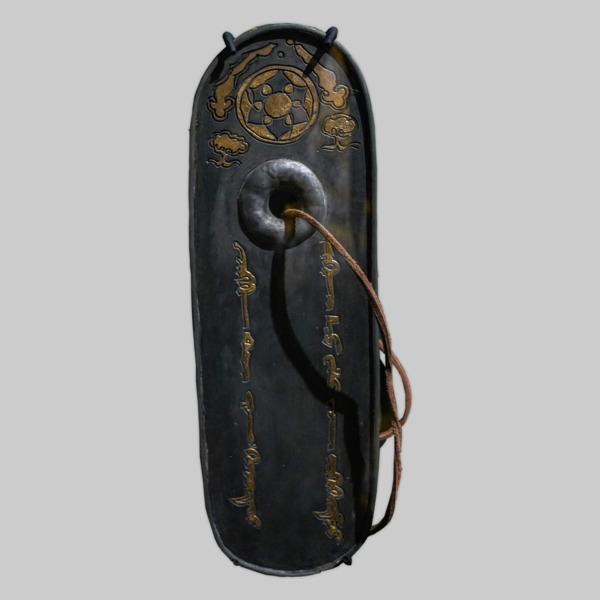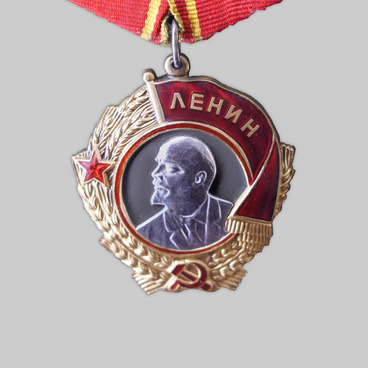Paiza of Abdullah-khan. Ulus of Jochi (Golden Horde). Second half of the 14th century. Copy. State Hermitage.
Paiza in translation from Chinese means ‘tablet’ or ‘plate’. This was the name of a plate made of wood or metal with an inscription, which was given out by the Chinese, Mongolian and Golden Horde rulers to different persons. The tag symbolized that the khan delegated power to its owner and endowed him with special powers or status.
In accordance with the khan’s decree, any orders and even desires of the one who presented paiza were carried out immediately and unquestioningly. Paiza could be wood, copper, silver, or gold. Sometimes it was adorned with precious stones and hung on a belt. From the pattern it was possible to find out the rank of the owner. For example, a temnik (military leader) wore a golden paiza with an image of a lying tiger or lion in the lower part. The thousand-man, who ruled over a thousand soldiers, also wore gold or gilded paiza, and the centurion wore silver. When it was required to endow an official with supreme power, the gyrfalcon was the symbol on the plate.
All types of paiza had the same inscription: “By the power of the eternal sky, let the name of the khan be holy; whoever does not believe must be killed”. The Golden Horde paiza also served as a kind of metal certificate for a written document — a label. If the document lost its validity for some reason, the paiza remained with the holder until a new label was received. For the entire period of the khan’s reign, it was enough to have one paiza.
The exhibit of the Museum of the History of Tatar Statehood and the Republic of Tatarstan contains a copy of the tag of Abdullah-khan, who ruled in the Golden Horde in 1361–1370.
Paiza of Abdullah-khan is an oblong-oval silver plate with a hole for a cord. Its length is 26.5 centimetres. The Mongolian inscription in Uyghur script reads: ‘By the power of the eternal sky. The patronage of great power. If someone does not respect Abdullah-khan’s decree, he will suffer [material] damage and die’. The label was found in 1845 in the village of Grushevka near the city of Nikopol, Ekaterinoslavsk province (modern territory of Ukraine). The original plate is exhibited at the State Hermitage Museum in St. Petersburg.
Paiza in translation from Chinese means ‘tablet’ or ‘plate’. This was the name of a plate made of wood or metal with an inscription, which was given out by the Chinese, Mongolian and Golden Horde rulers to different persons. The tag symbolized that the khan delegated power to its owner and endowed him with special powers or status.
In accordance with the khan’s decree, any orders and even desires of the one who presented paiza were carried out immediately and unquestioningly. Paiza could be wood, copper, silver, or gold. Sometimes it was adorned with precious stones and hung on a belt. From the pattern it was possible to find out the rank of the owner. For example, a temnik (military leader) wore a golden paiza with an image of a lying tiger or lion in the lower part. The thousand-man, who ruled over a thousand soldiers, also wore gold or gilded paiza, and the centurion wore silver. When it was required to endow an official with supreme power, the gyrfalcon was the symbol on the plate.
All types of paiza had the same inscription: “By the power of the eternal sky, let the name of the khan be holy; whoever does not believe must be killed”. The Golden Horde paiza also served as a kind of metal certificate for a written document — a label. If the document lost its validity for some reason, the paiza remained with the holder until a new label was received. For the entire period of the khan’s reign, it was enough to have one paiza.
The exhibit of the Museum of the History of Tatar Statehood and the Republic of Tatarstan contains a copy of the tag of Abdullah-khan, who ruled in the Golden Horde in 1361–1370.
Paiza of Abdullah-khan is an oblong-oval silver plate with a hole for a cord. Its length is 26.5 centimetres. The Mongolian inscription in Uyghur script reads: ‘By the power of the eternal sky. The patronage of great power. If someone does not respect Abdullah-khan’s decree, he will suffer [material] damage and die’. The label was found in 1845 in the village of Grushevka near the city of Nikopol, Ekaterinoslavsk province (modern territory of Ukraine). The original plate is exhibited at the State Hermitage Museum in St. Petersburg.



